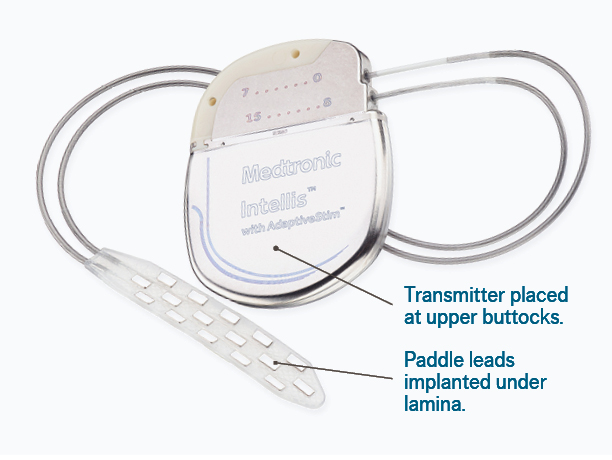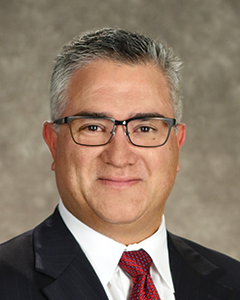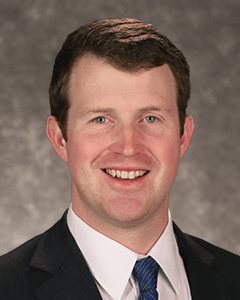When chronic back or leg pain cannot be alleviated by oral medications, physical therapy and therapeutic injections, NKCH patients may find relief with spinal cord stimulation. This intervention also is an option when back surgery fails to provide pain relief.
The device delivers small electrical signals to nerves along the spinal column through implanted leads. The leads are attached to a small spinal cord stimulator, which inhibits pain signals from reaching the brain.
“Although not a new procedure, recent advances have allowed us to treat chronic pain with not just low-frequency stimulation but also with high-frequency stimulation,” said Stephen L. Reintjes Jr., MD, a neurosurgeon with Meritas Health Neurosurgery. “The NKCH pain medicine physicians and I regularly discuss which patients might benefit from spinal cord stimulation and do a full workup to make sure there are no underlying problems. Our treatment is collaborative.”
The procedure requires two stages — a short trial period and long-term treatment.
 The procedure requires two stages — a short trial period with pain management and a long-term treatment with surgery. For the latter, the surgeon implants paddle leads and a rechargeable transmitter (above) for long-term pain relief. Image: Medtronic
The procedure requires two stages — a short trial period with pain management and a long-term treatment with surgery. For the latter, the surgeon implants paddle leads and a rechargeable transmitter (above) for long-term pain relief. Image: Medtronic
Trial
Once a patient meets stringent selection criteria regarding symptoms, duration of symptoms and psychological testing, a trial is scheduled. In the trial, a pain medicine physician guides a needle holding thin, insulated wires into the epidural space. There, the physician directs the electrical contacts attached to the wires for pain relief. The patient is awake during this short outpatient procedure, so the physician can pinpoint treatment with the aid of the patient’s responses to stimulation.
Once complete, the physician connects the wires to an external transmitter. The patient returns home with a physician-programmed hand-held controller. The patient can adjust the stimulation duration and intensity. The one-week trial period helps patients and their physicians determine if the treatment is beneficial.
“If a patient reports back that their pain is reduced more than 50%, then we consider the procedure successful,” said Patrick D. Griffith, MD, a pain medicine physician with Pain Source Solutions. He removes the trial wires and refers the patient for surgical implantation.
Long-Term Treatment
A successful trial sets the stage for long-term treatment, which involves placement of a permanent lead and generator.
Dr. Reintjes Jr. surgically implants paddle leads under the lamina for long-term stimulation and a rechargeable transmitter about the size of a pacemaker at the patient’s upper buttocks.
“Patients often find significant relief. They usually know what settings work well from their trial period, and we continue to follow those settings,” Dr. Reintjes Jr. said. “Lead migration is the most common complication, and we can X-ray the patient to determine if replacement leads are required.”

Patrick D. Griffith, MD
Dr. Griffith is a graduate of the University of Missouri and completed his residency in anesthesia and pain management at Barnes- Jewish Hospital.

Stephen L. Reintjes Jr., MD
Dr. Reintjes Jr. earned his medical degree from the University of Missouri. During his neurosurgery residency at the University of South Florida, he completed a one-year neurosurgery fellowship in epilepsy at the college and a one-year neurosurgery fellowship at the Swedish Neuroscience Institute.